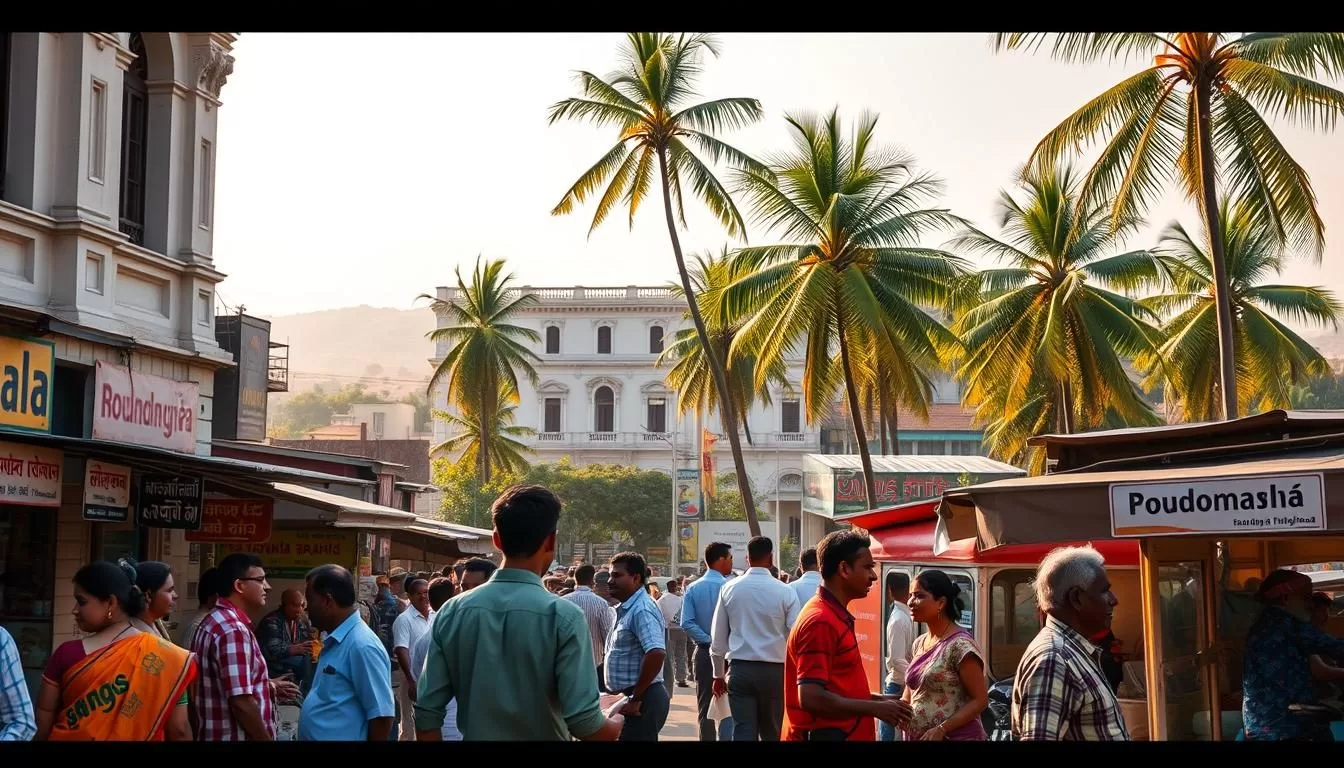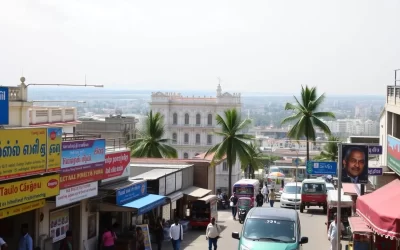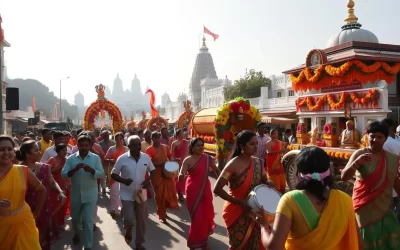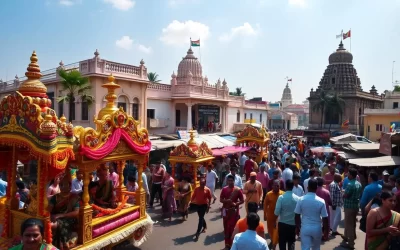As you explore the union territory of Puducherry, you’ll discover a fascinating linguistic landscape shaped by its rich colonial history. Located in the southern part of the Indian Peninsula, Puducherry is a unique blend of cultures, with four geographically unconnected districts.
The territory’s linguistic diversity is a result of its complex history, having been formed out of four territories of former French India. You’ll learn how the official language and widely spoken languages vary across the districts of Puducherry, Karaikal, Mahé, and Yanam.
This introduction will guide you through the complex interplay between history, geography, and policy that has created Puducherry’s distinctive linguistic character.
The Linguistic Landscape of Puducherry
As a union territory, Puducherry exhibits a fascinating blend of languages due to its unusual geography. The Union Territory of Puducherry is characterized by its distinct geographical composition, featuring four separate districts.
Overview of Puducherry Union Territory
Puducherry, officially known as the Union Territory of Puducherry, is a region with a unique geographical setup. It comprises four distinct districts: Puducherry, Karaikal, Yanam, and Mahé, spread across the eastern and western coasts of India. The total area covered by Puducherry is 483 km², with Puducherry and Karaikal being the largest in terms of area and population. Notably, these districts are enclaves within other states: Puducherry and Karaikal are within Tamil Nadu, Yanam is within Andhra Pradesh, and Mahé is within Kerala.

Language Distribution Across the Territory
The linguistic diversity in Puducherry is a reflection of its geographical and historical context. According to the 2011 census, Tamil is the predominant language, spoken by 88.22% of the population. Other significant languages include Telugu (5.96%) and Malayalam (3.84%).
The distribution of languages varies across the four districts, influenced by the local population and historical settlement patterns. For instance, Tamil is more prevalent in Puducherry and Karaikal, while Yanam has a higher concentration of Telugu speakers, and Mahé is predominantly Malayalam-speaking. This diversity is a result of both historical influences and modern migration trends within the territory.
Official Languages of Puducherry
Puducherry’s linguistic identity is shaped by its rich cultural heritage and colonial past, reflected in its official languages. The Union Territory of Puducherry is home to a diverse population, with various languages playing significant roles in governance, education, and daily life.
Tamil as a Primary Official Language
Tamil holds a unique status as the primary official language of Puducherry, spoken by over 88% of the population. It is extensively used in government, education, and daily communication, making it an integral part of the territory’s identity. The widespread use of Tamil is a testament to the territory’s cultural heritage.
French: A Colonial Legacy
French continues to be an official language in Puducherry, a legacy of the territory’s colonial past. According to Article XXVIII of the Traité de Cession (Treaty of Cession) of 1956, French remained the official language of the Establishments “so long as the elected representatives of the people shall not decide otherwise.” This historical context has allowed French to maintain its status long after the end of colonial rule.
Other Official Languages: Malayalam, Telugu, and English
In addition to Tamil and French, other languages have been granted official status in specific districts. Malayalam is recognized in Mahe, while Telugu holds official status in Yanam, reflecting the linguistic realities of these regions. English serves as a link language across all four districts, facilitating communication with the central government. The 1965 Pondicherry Official Language Act formalized the status of these languages, maintaining the implicit continuation of French’s official status.
- The diverse linguistic landscape of Puducherry is a reflection of its cultural richness.
- The official status of various languages ensures that the needs of different linguistic communities are met.
- The continued use of French is a unique aspect of Puducherry’s cultural identity.
Puducherry (UT), India: Official and Widely Spoken Languages
The Union Territory of Puducherry is home to a multitude of languages, reflecting its diverse cultural fabric. As you delve into the linguistic landscape of this region, you’ll discover that multiple languages are not only spoken but also hold official status.
Tamil: The Dominant Language
Tamil is the predominant language in Puducherry, spoken by 88.22% of the population according to the 2011 census. With over 69 million speakers, Tamil is not only widely spoken in Tamil Nadu but also in the Union Territory of Puducherry. It is one of the oldest living languages in the world, boasting a rich literary tradition that spans over 2,000 years. As an official language in Sri Lanka and Singapore as well, Tamil’s significance extends beyond India’s borders.

Telugu and Malayalam Speakers
In addition to Tamil, other significant languages spoken in Puducherry include Telugu and Malayalam. Telugu, spoken by 5.96% of the population, is primarily concentrated in the Yanam district, which is geographically surrounded by Andhra Pradesh. With over 81 million speakers, Telugu is predominantly used in the states of Andhra Pradesh and Telangana. Malayalam, spoken by 3.84% of the population, is centered in the Mahe district, an enclave within Kerala state. It has over 34 million speakers and is also spoken in the Union Territories of Lakshadweep and Puducherry.
| Language | Percentage of Speakers | Primary Regions |
|---|---|---|
| Tamil | 88.22% | Puducherry, Tamil Nadu |
| Telugu | 5.96% | Yanam, Andhra Pradesh |
| Malayalam | 3.84% | Mahe, Kerala |
Other Linguistic Communities
Apart from the major languages, Puducherry is also home to smaller linguistic communities, including speakers of Urdu, Hindi, Gujarati, and other Indian languages. These communities have settled in the territory, contributing to its multicultural society. Despite being smaller in number, they maintain their linguistic identities while participating in the broader cultural landscape of Puducherry.
Understanding the linguistic diversity of Puducherry provides insight into its complex cultural heritage and the harmonious coexistence of different language communities within the territory.
Regional Language Distribution Across Districts
Puducherry’s districts showcase a fascinating mix of languages, reflecting the territory’s complex history and geography. The union territory comprises four districts: Puducherry, Karaikal, Mahe, and Yanam, each with its unique linguistic characteristics.
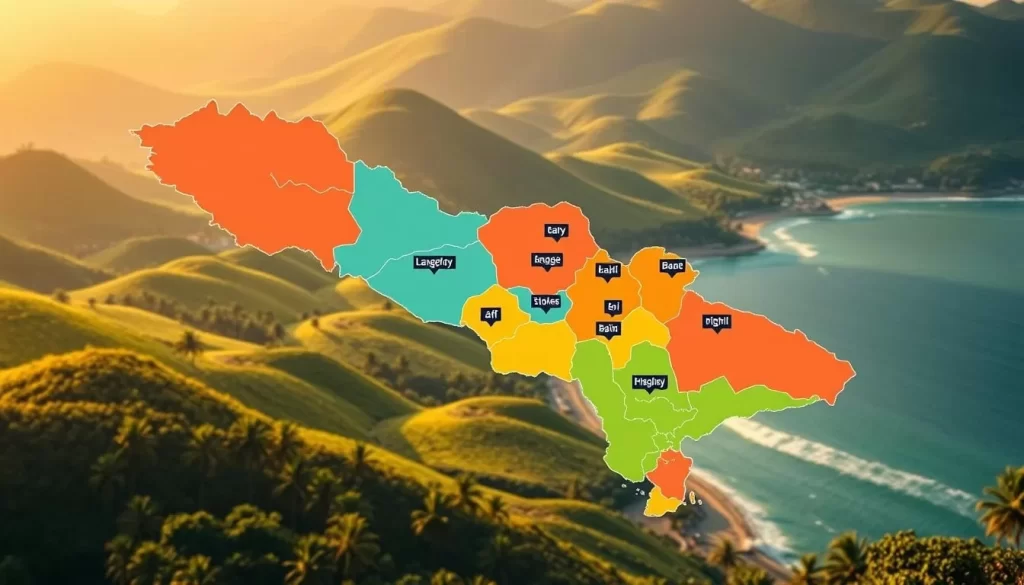
Puducherry District: Tamil Dominance
The Puducherry district, being the largest and most populous region, is predominantly Tamil-speaking. Tamil is deeply embedded in the local culture, education, and governance, making it an integral part of daily life in the district.
Karaikal: Tamil-Speaking Enclave
Karaikal, another enclave within Tamil Nadu, shares the Tamil linguistic character with Puducherry. The district’s geographical separation from the main Puducherry district does not affect its linguistic affinity, with Tamil being the dominant language.
Mahe: Malayalam Prevalence
In contrast, Mahe is a Malayalam-speaking region surrounded by Kerala. The language is used in local administration, education, and daily life, reflecting the district’s cultural ties with the surrounding state.
Yanam: Telugu-Speaking Region
Yanam, located within Andhra Pradesh, maintains a distinct Telugu-speaking identity. The district’s linguistic character is shaped by its geographical location and historical context, with Telugu being the predominant language spoken.
These linguistic divisions across districts not only reflect the historical settlement patterns but also the geographical reality of Puducherry as a non-contiguous territory. Each district maintains a connection to both Puducherry’s central administration and the surrounding state’s linguistic culture, enriching the territory’s linguistic diversity.
Historical Evolution of Languages in Puducherry
As you explore the linguistic landscape of Puducherry, you’ll uncover a rich history that spans centuries. The territory’s unique blend of languages is a result of its complex past, shaped by colonial influences and cultural exchanges.
Pre-Colonial Linguistic Heritage
Before the arrival of European colonizers, Tamil was the predominant language in the coastal settlements that would later become French colonies. The region’s linguistic heritage was characterized by the presence of local languages, including Tamil, Telugu, and Malayalam, which were spoken by various communities.
French Colonial Influence (1674-1954)
The establishment of French settlements in 1674 marked the beginning of a new linguistic era in Puducherry. French became the language of administration and elite education, creating a bilingual environment where French coexisted with local languages, particularly Tamil in Puducherry and Karaikal. The French East India Company established a settlement in 1674 at Pondicherry (now Puducherry), followed by other enclaves like Mahe, Yanam, and Karaikal. This period saw the introduction of French as a dominant language, influencing the local linguistic landscape.
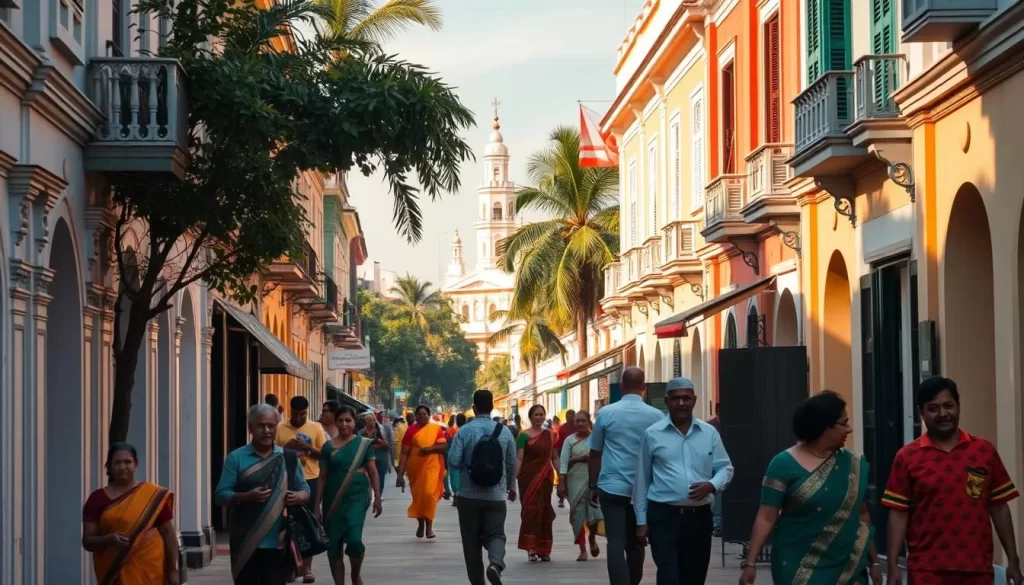
Post-Independence Language Policies
The de facto transfer of the four remaining French possessions to the Union of India on November 1, 1954, and the subsequent de jure transfer in 1956, had significant linguistic implications. Post-independence language policies aimed to balance respect for the French linguistic heritage with the promotion of Indian languages, particularly Tamil. The territory formally took the name Puducherry on October 1, 2006, reflecting a shift from the French spelling to one closer to the original Tamil pronunciation. This change symbolized the territory’s connection to its Tamil roots while acknowledging its complex history.
Legal Framework for Languages in Puducherry
Puducherry’s linguistic landscape is supported by a legal framework that has evolved significantly over the years. This framework is crucial for understanding how languages are used in official contexts, education, and public services across the territory.
The Treaty of Cession (1956) and Language Rights
The Treaty of Cession in 1956 was a pivotal agreement that established the legal framework for language rights in Puducherry following its transfer from French to Indian control. Article II of the Treaty guaranteed the continuation of the “special administrative status” that existed before November 1, 1954, including language provisions. This meant that the four territories of former French India were permitted to make laws with respect to specific matters, including language use.
- The Treaty ensured that the Establishments would retain their special administrative status.
- Any constitutional changes to this status required consultation with the population.
The Pondicherry Official Language Act (1965)
The Pondicherry Official Language Act of 1965 was a significant legislative step that formalized the status of Tamil, Malayalam, Telugu, and English as official languages. Although French was not explicitly removed as an official language, the Act recognized the linguistic diversity of the region. The 1963 Pondicherry representative assembly resolution had voted to continue French as an official language while adding other languages spoken in Puducherry.
Current Language Policies and Implementation
Today, the legal framework governing languages in Puducherry continues to evolve, influenced by the central government’s involvement in the territory’s administration. The current language policies reflect a balance between maintaining the historical legacy of French and promoting the diverse linguistic heritage of the region. The implementation of these policies affects official communications, education, and public services across the four districts of Puducherry.
- The central government’s role has shaped language policies over the decades.
- Language use in official contexts and education continues to be guided by the legal framework established by historical treaties and legislative acts.
Conclusion: Puducherry’s Unique Linguistic Identity
As you explore the linguistic landscape of Puducherry, you’ll discover a unique blend of languages shaped by its colonial past and integration into the Indian union. The territory’s official languages – Tamil, French, Malayalam, Telugu, and English – reflect its diverse cultural heritage and special constitutional status as one of three union territories with an elected legislative assembly and partial statehood.
Puducherry’s linguistic diversity is further enriched by cultural institutions like the Sri Aurobindo Ashram and Auroville, which attract international visitors and residents, contributing to the territory’s multilingual environment. The jurisdiction of the Madras High Court over Puducherry also plays a significant role in shaping legal proceedings and documentation languages.
The preservation of French as an official language is a rare example of post-colonial linguistic continuity. As Puducherry continues to evolve, its linguistic identity remains a vibrant reflection of its history and cultural diversity, making it a unique entity within multilingual India.
The above is subject to change.
Check back often to TRAVEL.COM for the latest travel tips and deals.
